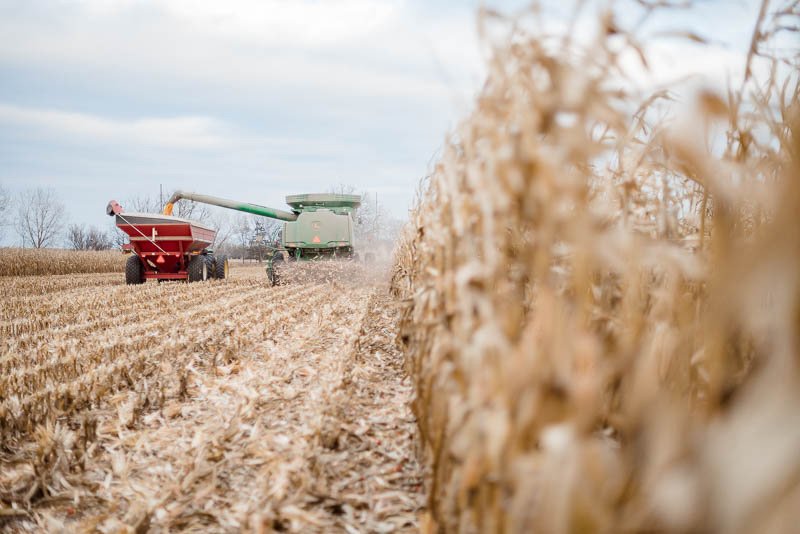Reducing, Reusing and Recycling on the Farm
Peggy and Brad Greenway take pride in finding new ways to grow safe and healthy food for families. Every day and every season, they look to improve their sustainability by reducing, reusing, and recycling on their family farm. Over the years, their “start-up” has transformed into an efficient and environmentally friendly business that’s prepared to support future growth.
“Sustainability is so important to us because it’s the only way our farm will succeed. We need to do our best to take care of the land, water and our animals. Now, we’re proud our son is getting more involved with the farm and will help us keep the family tradition going.”
She loves that recycling happens so naturally on farms. They feed their pigs and cows the soybeans, corn, and alfalfa they grow in their fields. The animals eat that food for energy to keep them healthy, and then the Greenways use the manure they create to fertilize the soil. Thanks to farm technology and the Greenways’ team of experts, this reducing and reusing process has become a sustainable cycle.
To grow healthy crops, Peggy and Brad spend time with their agronomist each year, reviewing data on digital field maps. He’s an expert in soil and crop health and provides recommendations on the right amounts of fertilizer to apply and seeds to plant across each acre. If they have issues with weeds or pests, he can also provide them advice on the type and amount of pesticides they should use to ensure their crops are protected and nothing is wasted. They use his insights to set up the precision technology in their manure spreader, planter, and other equipment to make each pass across the field as efficient as possible.
On the animal side, the Greenways work closely with swine nutritionists and veterinarians to ensure their pigs stay as healthy as possible. Their feed is specifically formulated to meet the needs of each stage of growth, which means it could change up to 10 times in just six months!
To keep the pigs comfortable every day of the year, the Greenways house them in ventilated barns where they can control important factors like temperature and air quality. Peggy has seen firsthand how keeping pigs happy in climate-controlled barns translates to better efficiency.
“When we moved our pigs inside from our hoop buildings and kept them at a consistent temperature every single day of the year, we noticed it required less feed to get them ready for sale. Looking back at that data now, we’d need to grow 100 more acres of soybeans and 160 more acres of corn if we went back to hoop barns. Better comfort using less land and water is a very measurable sustainability win.”
Those hoop barns aren’t going to waste. They still come in handy during calving. While cattle spend the majority of their lives grazing on open pastures, it’s nice for the babies and mamas to have shelter during birth in the winter months to ensure a strong and healthy start.
As Peggy and Brad continue to look for ways to gain efficiencies, being attentive to the needs of crops and animals is something they know won’t change.
“We’re all about reducing waste when we can to make the most of our resources, but there are times when high touch is better than high tech. It’s all about finding a balance so we can continue to grow in the right ways.”
Hungry for Truth is an initiative about food and farming funded by the South Dakota soybean checkoff. The goal is to connect South Dakotans with the farmers who grow and raise their food.












